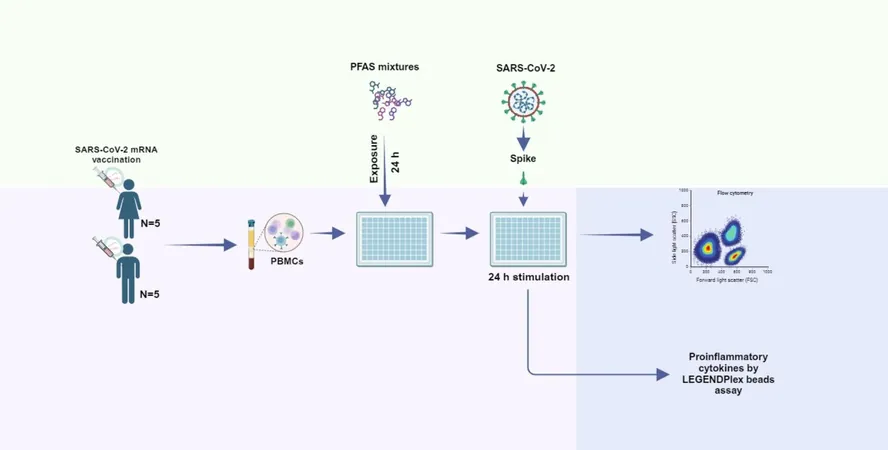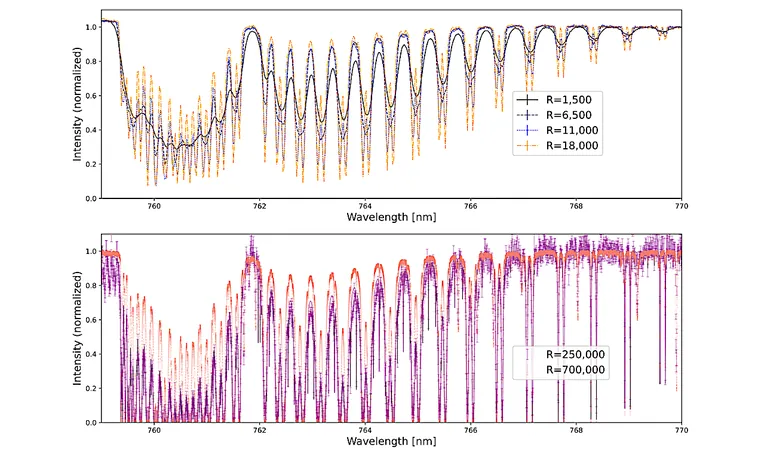
Revolutionary Self-Healing Building Material Made from Fungi and Bacteria
2025-04-16
Author: Rajesh
A Groundbreaking Discovery in Sustainable Construction
Imagine a world where buildings can repair themselves! Scientists have unveiled a stunning new living material derived from fungi and bacteria that can actually heal itself for over a month.
Developed by innovative American engineers, this remarkable substance utilizes the root-like mycelium of fungi in conjunction with bacterial cells. Their findings, shared in the journal 'Cell Reports Physical Science,' emphasize its extraordinary self-repair capabilities.
A Sustainable Alternative to Concrete?
According to the research team, this self-healing material could serve as a sustainable alternative to traditional high-emission building materials like concrete, notorious for contributing significantly to greenhouse gas emissions.
Dr. Chelsea Heveran, an Assistant Professor at Montana State University and the study's lead author, explained, “While biomineralized materials don't yet match concrete's strength for all applications, our work is focused on enhancing their properties to expand their usability.”
Living Materials for a Brighter Future
Unlike other biomaterials that last just a few days or weeks, this new material, crafted using fungal mycelium and bacteria, remains effective for at least a month! Dr. Heveran shared her excitement, stating, “The longer these bacteria can thrive within the material, the more functions they can perform, including self-repair and contamination cleanup.”
A Closer Look at the Science
The journey to develop such living materials has been fraught with challenges, as those made from living organisms often struggle with short viability and lack the intricate internal structures needed for robust construction.
However, the Montana State team, led by PhD student Ethan Viles, has made significant strides by using fungal mycelium as a scaffold, inspired by its previous applications in packaging and insulation. They focused on the fungus Neurospora crassa, which allowed them to create materials with diverse and complex architectures.
Shaping the Future of Building Materials
Dr. Heveran highlighted the potential of fungal scaffolds by stating, “These structures enable us to control the internal architecture of the material, allowing designs that mimic bone-like geometries. The possibilities for future geometrical designs are endless!”
The team is committed to further advancing their innovative biomaterials, aiming to prolong the lifespan of the living cells and ultimately produce them on a larger scale.
Why This Matters
With cement contributing to an alarming 8% of all human-produced carbon dioxide emissions, finding replacements like this self-healing, sustainable material could be pivotal in combating climate change. The future of construction may be greener than we ever imagined!





 Brasil (PT)
Brasil (PT)
 Canada (EN)
Canada (EN)
 Chile (ES)
Chile (ES)
 Česko (CS)
Česko (CS)
 대한민국 (KO)
대한민국 (KO)
 España (ES)
España (ES)
 France (FR)
France (FR)
 Hong Kong (EN)
Hong Kong (EN)
 Italia (IT)
Italia (IT)
 日本 (JA)
日本 (JA)
 Magyarország (HU)
Magyarország (HU)
 Norge (NO)
Norge (NO)
 Polska (PL)
Polska (PL)
 Schweiz (DE)
Schweiz (DE)
 Singapore (EN)
Singapore (EN)
 Sverige (SV)
Sverige (SV)
 Suomi (FI)
Suomi (FI)
 Türkiye (TR)
Türkiye (TR)
 الإمارات العربية المتحدة (AR)
الإمارات العربية المتحدة (AR)